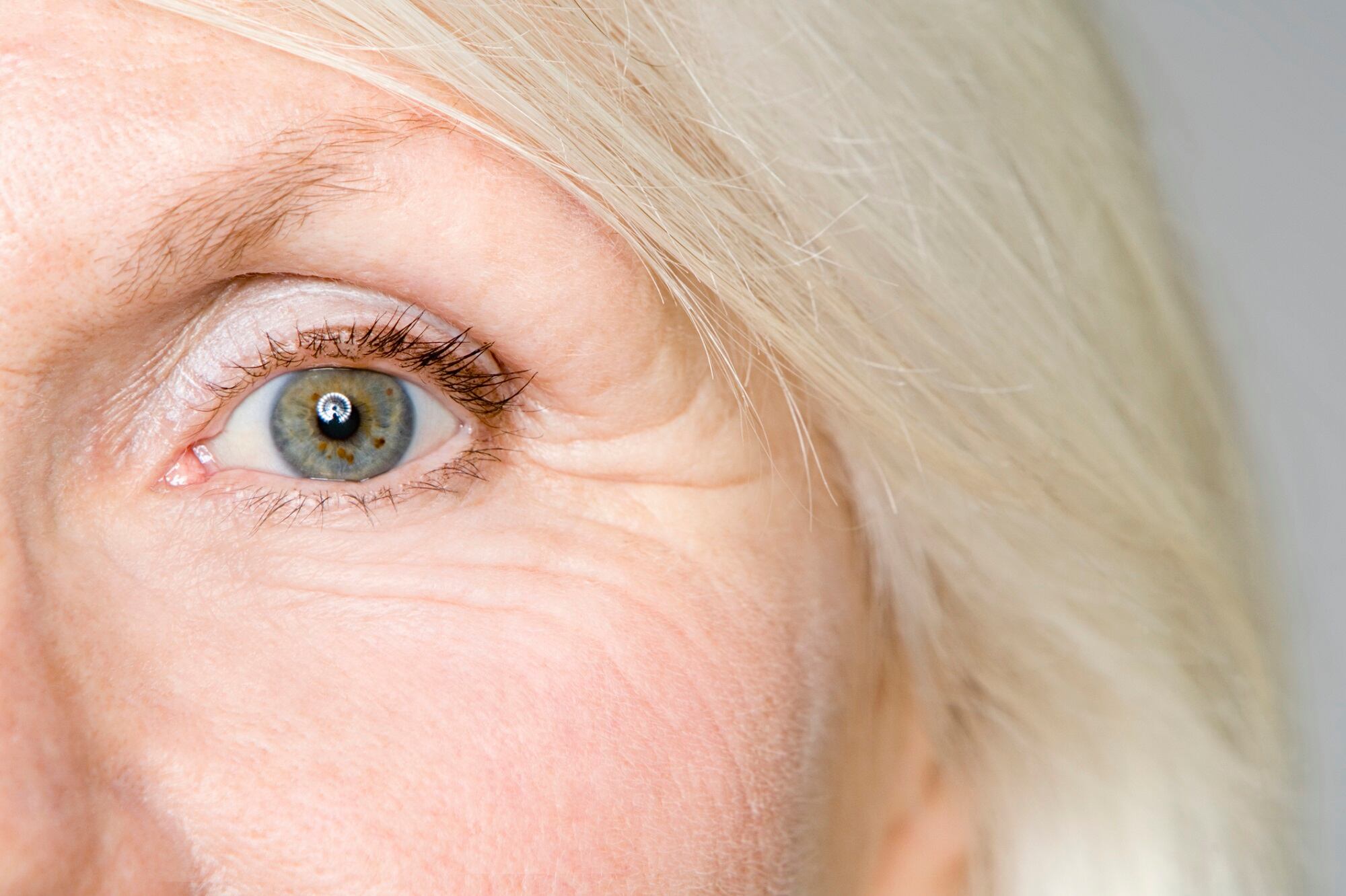Earlier this year, Professor Mike Sherratt of the University of Manchester, UK presented research findings at the American Academy of Dermatology conference which indicate certain protein fragments, or peptides, naturally produced by skin through the aging process, can potentially be isolated and applied topically to repair age-related damage like wrinkles.
Peptides are known to be released in response to UV damage or inflammation to support the skin’s natural repair process and have already been used as an ingredient in some cosmetic product formulations. In Sherratt’s research, his team used predictive artificial intelligence (AI) to isolate two peptides believed to be responsible for skin repair, then tested the efficacy of the peptides in topically applied patches.
The research team determined that the participants’ skin was ultimately more elastic after topical patch application due to increased levels of key protein structures when compared to untreated skin and noted that those increased levels were comparable to people several years younger than the participants age.
To learn more about Sheratt’s research and its potential impact for cosmetics and personal care product manufacturers, including the ways in which these findings can be applied to future product formulations, CosmeticsDesign interviewed Professor Sherratt and Dr. Ellie Bradley, Senior Scientist at the No7 Beauty Company for their insights.
CDU: Can you share some brief background about yourself, your organization, and your expertise in this area of research?
Mike Sherrat (MS): I am a Professor of Biochemistry at the University of Manchester, one of the largest, most successful, and well-equipped research institutions in Europe. The collaboration with the No. 7 Beauty Company draws on extensive expertise in Manchester in extracellular matrix (ECM) biology and translational research in dermatology.
My specific expertise is in understanding the impact of ageing on the ECM of tissues and organs including arteries, breast, and skin. It is only by understanding the effects of ageing that we can measure the efficacy of any interventions.
Ellie Bradley (EB): I am a Senior Scientist at the No7 Beauty Company (a member of Walgreens Boots Alliance), working in the Research and Development team based in Nottingham, UK. We create skincare and cosmetics products for consumers in many countries around the world, including in the US. No7, our biggest skincare brand is science-led and was created nearly 90 years ago. The new peptides can be found in our latest product range called No7 Future Renew.
I have a PhD in skin biology, with a focus on understanding the mechanism of action of topical cosmeceuticals including retinoids and peptides. I have a keen interest in how skin ages and gets damaged throughout life, and how topical skincare ingredients can help reverse some of these visible signs of damage by working beneath the surface of the skin.
CDU: What is the potential impact of this research on manufacturers and suppliers to the cosmetics and personal care product industries?
EB: This research utilized a novel in silico machine learning approach to identify bioactive peptides, based on those that would naturally be released in the skin when dermal proteins are fragmented by proteases.
This in silico approach will be especially useful when thinking about developing new ingredients and formulations targeting concerns arising from dermal breakdown and improved by dermal remodeling, such as lines and wrinkles and a lack of firmness.
This new research also helps to strengthen the scientific credibility and consumer belief that peptides in skincare can offer real benefits to the skin, hopefully helping continue the interest and innovation in peptides in skincare.
MS: Although it has been clear for a number of years that application some small matrix-derived peptides can affect skin composition and appearance the discovery of new peptides has lacked an underpinning hypothesis. However, we know from work in other organs that ECM-derived peptides in tissues can affect cell behavior.
Therefore, we have proposed and tested the hypothesis that novel, bioactive matrikines can be identified by prediction of enzymatic cleavage sites in dermal proteins.
CDU: Have there been any clinical studies published that support these findings, and can you summarize the research and conclusions of this research as applicable to cosmetics and personal care product formulators?
EB: We have a manuscript in progress on the research behind our peptides (available as a preprint on BioRxiv Novel in-silico predicted matrikines are differential mediators of in vitro and in vivo cellular metabolism | bioRxiv). We have presented this research at the American Academy of Dermatology Conference in March 2023, the British Society of Investigative Dermatology in March 2023 and the International Society of Investigative Dermatology Conference in May 2023.
In summary, the research shows an in silico to in vivo approach for discovering new bioactive peptides, based on those theoretically released naturally in the skin when dermal proteins are fragmented by proteases. Following the generation of peptide sequences using algorithms to predict fragmentation of key dermal proteins, to help select the most effective and suitable peptides for initial screening in vitro, peptide stability was considered, along with molecular size.
Omics approaches (proteomics and transcriptomics) were then used to understand the wider mechanism of action of the identified peptides, spanning both in vitro testing and eventually in vivo testing on photoaged skin, highlighting the need to understand the efficacy and activity of ingredients not just on skin cells in dishes but also in vivo on human skin.
As part of this research we also focused on peptide delivery, utilizing tools including formulating for efficacy. A focus on optimizing delivery is essential when formulating topical products with ingredients such as peptides, as getting through the stratum corneum is essential for their efficacy in vivo.
This software enabled the formulation of a delivery system tailored to the specific chemistry of the peptide, predicting peptide movement from the formula into and then through the skin’s stratum corneum in order to optimize this process.
MS: The application of peptides to cultured dermal cells enhanced the transcription of genes involved in ECM (dermal) structure. A peptide-containing formulation applied to human skin enhanced transcriptomic pathways associated with epithelial and dermal remodeling. Parallel immune-histochemical analysis demonstrated (compared with the occluded control) significant deposition of new fibrillin microfibrils (a key elastic fibre component) in treated skin.
CDU: How can these findings be applied to cosmetic and personal care product formulation processes for finished products?
EB: These findings can firstly be applied to the identification of new peptide ingredients, along with the utilization of omics techniques to assess more holistically ingredient and product efficacy.
The tools used to predict and assess peptide penetration can also be applied to formulation design. When thinking about bioactive peptides and their in vivo efficacy when applied topically, optimizing stability and penetration should be at the forefront of the formulation design.
CDU: What are the key takeaways from this research?
EB: An in-silico machine learning approach can be used to successfully identify bioactive peptides. A focus on peptide stability and delivery is essential in formulating efficacious products with peptides.
MS: ECM-derived peptides display a wide range of activities and hence have the potential to modify cell behavior and hence tissue composition and structure in multiple ways.
CDU: What further research needs to be performed in this area?
EB: There is still work to be done to fully understand how peptides journey through the skin. I think new techniques which improve tracking and visualization of biomimetic small molecules such as peptides will help with advance this exciting area of research.
MS: New methods to rapidly screen peptides for desirable activities will be key.
CDU: Are there any plans for further research in this area?
EB: We have plans to continue exploring additional skin benefits for our peptides, as the omics work suggested some unexpected areas of activity including regarding skin barrier support. Peptide synergy with other ingredients is also an area of potential exploration.





